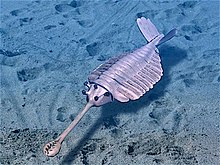Dec 24, 2013 Read more at: http://phys.org/news/2013-12-scientists-highlight-resurrection-extinct-animals.html#jCp
Resurrection of several extinct species, the increasingly accelerated loss of wild rhinoceroses and a disastrous financial response to unburnable carbon are just some future global conservation issues flagged up in this year's Horizon Scan, recently published in Trends in Ecology and Evolution.
Professor William Sutherland and Dr Mark Spalding are amongst the 18 scientists who took part in this year's Horizon Scan, seeking to identify potential future conservation issues in order to reduce the "probability of sudden confrontation with major social or environmental changes".
One such plausible issue is the resurrection or re-construction of extinct species, such as the woolly mammoth, passenger pigeon or the thylacine (a carnivorous marsupial). However, though there may be many benefits to the restoration of these animals, such a high-profile project could lead to attention and resources being diverted from attempts to thwart current threats to non-extinct species' survival.
Professor Sutherland said 'There has been discussion of this idea for some time but it is now looking more practical and the idea is being taken seriously. A key issues is whether this is really a conservation priority'.
Though the last woolly mammoth died around 4000 years ago, methods such as back-breeding, cloning and genetic engineering may lead to their resurrection. Not only could these extinct animals, and others such as the thylacine and the passenger pigeon, be re-constructed and returned to their native environments, they could potentially be used to "provide tools for outreach and education".
However, though this would be a conservational triumph, it could also hamper efforts to protect animals that are currently facing extinction, as both attention and resources would be diverted from preserving existing species and their habitats. Furthermore, there has not been any investigation into the "viability, ethics and safety of releasing resurrected species", nor the effect their presence may have on indigenous flora and fauna.
Another potential conservational issue identified by the Horizon Scan further highlights the problems facing species today. The loss of wild rhinoceroses and elephants is set to reaccelerate within the next few years, partially stimulated by a growing desire for ivory and horn.
In 2013, it is estimated that over 600 rhinoceroses were poached for their horn in South Africa alone, out of a total global population of less than 26,000. Though an increased human population and proximity to growing infrastructure is partially responsible, organised crime syndicates and intensive hunting carry the weight of the blame. In the Asian countries that use it, rhinoceros horn is more expensive than gold. Demand for the precious horn is ever increasing, resulting in elevated levels of poaching. If attention and resources are diverted from the protection of these majestic animals, we may have yet more candidates for resurrection in the future.
Altogether, this group of scientists identified the top 15 potential conservation issues (out of an initial group of 81 issues). In addition to the above topics, extensive land loss in southeast Asia from subsidence of peatlands, carbon solar cells as an alternative source of renewable energy, and an emerging fungal disease amongst snakes, have also been voted as plausible threats that need to be stopped before they can be realised.
Journal reference: Trends in Ecology and Evolution







